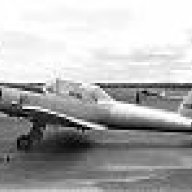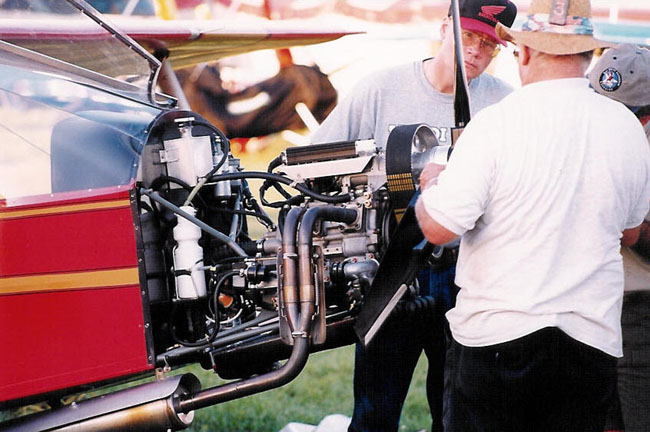-
Posts
144 -
Joined
-
Last visited
Content Type
Profiles
Forums
Gallery
Downloads
Blogs
Events
Store
Aircraft
Resources
Tutorials
Articles
Classifieds
Movies
Books
Community Map
Quizzes
Posts posted by hiperlight
-
-
Ozzie said: 'careful, there is always a spare slot at the wall for troublemakers'
Is that 'The Wall' at Darlinghurst???

Hiperlight
-
YHOX - bye, bye
In 1955 Hoxton Park was an abandoned WW2 emergency airstrip with weeds growing through cracks in the bitumen surface. We (RAAF National Service Trainee Airmen) did stall and spinning training, in Tigers and Chippies, above the strip. On one occasion, indelibly etched on my memory, the engine in my Chipmunk (VH AJD) failed to respond to the throttle after a spinning exercise. I was on final for what would have been runway 34, just about to shut the switches and fuel off, when the motor came to life and I returned to base. It was not until 2004, 49 bloody years later, that I landed at Hoxton in a Piper Warrior. The weeds were gone and the bitumen was painted with runway markings. It's sad to see it go, but understandable in a rotten society motivated by money and greed - and believe me, I am anything but a socialist.
Bruce
-
Brains
My three year old grandson was sitting in the bath when he noticed his testicles...'Mum, are those my brains?' he asked. His mother quickly replied: 'No, son...not yet!'
Bruce
-
Nev,
I don't think it is quite that simple...'centrifugal force' is an apparent force...centripetal force is a net force applied to an object to change the object's straight line inertial path which is tangential to its new circular path. Without a centripetal force (which acts on an object towards the centre of its circular path) an object with a velocity (speed and direction) will move in a straight line, unless there are other external forces acting on it.
OK, that's enough mental exertion from simple old me...where are the Physicists out there.
Bruce
-
]Nev,Sorry downunder, you said it was a 2-stroke. In that case there is always a force on the top of the piston.. A ball-park figure would be to add the con-rod + piston assy weight and calculate the centrifugal force with it acting at the crankpin centre, at max revs likely to be attained. I can't help you with anything better. Nev..Please define and quantify 'centrifugal force'.
Bruce
-
You know what I like about QLD?


Whenever I go there - everyone's always smiling!



:big_grin::big_grin::big_grin:
That's because they don't know what's really happening!!!

Bruce
-
-
A classic example of two linked crankshafts 'fighting' one another was the Ariel Square Four.
Another interesting opposed piston diesel was the Napier Deltic used in Motor Torpedo Boats in WW2. Three crankshafts set up at the apexes of an inverted triangle with three cylinders and six pistons between, in each bank.
General Motors bought the rights to that engine in the 1960's (I think), and converted it to steam as an exercise to prove that steam power was not a practical alternative to their 'gasoline' guzzling V8's. GM has, I believe, archived it for the 'future'.
Bruce
-
The Rootes Group Commer TS3 'Double Knocker' from the 1940's until the 1970's was similar in design to the Gemini 100 except for the single crankshaft and substantial rockers.
http://www.oldengine.org/members/diesel/technical/TS3.htm
Bruce
-
John...I don't think there is anything to add to your post. It is very sobering. After reading it, I felt numb.
Bruce
-
Hello Bob,
Here are a couple of ideas:
(1) if your mate sends those emails to other computers and they are not duplicating there, then maybe you have your email program is set to leave a copy of all messages on your server...then each time you download mail you will see the message again.
(2) if your mate's hard drive is almost full and Outlook Express has insufficient space to move the sent message from the outbox to the sent items folder then the message will remain in the outbox and will be resent each time he selects send/receive.
Bruce
-
Oops...9.24pm Sunday in Vietnam is 1.24am DST Monday in Sydney...DST has another week to run!!!
Bruce
-
pdutholt...that would only work if aircraft flew with groundspeed and not airspeed!!!
Bruce
-
Looking at the traumatic damage to crankshaft makes one wonder whether it was due to a prop. strike with power on.
Bruce
-
Of course one or more siezed pistons may have contributed to the crankshaft failure. Built up crankshafts have been used successfully for many decades. Porsche 356 Super and Carrera engines in the 1950's are good examples. The cranks were made by Hirth.
In my humble opinion the Rotax 912/914 motors are solid, and virtually bullet proof, if they have proper lubrication and cooling.
Bruce
-
Here is something to think about:
why do most people in this country persist in the use of kilogram, instead of
Newton, as a unit of weight. Kilogram is a unit of mass.
w = mg (9.8N = 1kg x 9.8m/s/s). So the weight of a mass of 1 kilogram is 9.8 Newtons
In the USA pound a unit of force and slug is a unit of mass.
So 32.2 pounds = 1slug x 32.2ft/s/s and the weight of 1slug is 32.2pounds or 143Newtons.
The foregoing is based on 'g' (acceleration due to gravity) being 9.8m/s/s or 32.2ft/s/s.
Bruce
-
Rotary Engines
Try these two links...I know they are not Mazda but interesting anyway. Phantom had an aircraft flying last year but dropped the testing after a bearing failure.
http://www.ultralightnews.com/sunfun99/hiperlight.html
http://www.ultralightflyer.com/airshow-snf05/22.html
Bruce
-
Hello Scott...CONGRATULATIONS...now that's what I call a good looking aeroplane...and NO! I don't have one but perhaps I should.
HAPPY NEW YEAR
Regards...Bruce
-
pelorus32 said: 'In any event spins aren't going to kill us at 3500 feet. They're going to kill us at 500 feet turning final. At that point we don't want to spin. Instead we want to not enter a stall.'
In the mid to late 1950's DH-C1's (Chipmunks) were banned from spin training after several full blown fatal spins quickly developed from incipient spins during stall and spin practice above 3500' AGL.
I looked at my RAAF (NST) logbook for 1955 and the first 50 hours included 3 hours dual and 7 hours solo specifically dedicated to stalls and spins in DH-82 and DH-C1 acft. Below 500' AGL recovery from a stall in a Tiger Moth might be possible but most unlikely in a Chipmunk. Spin from below 500' in either (or any acft) and you're history.
3000'+AGL and a Tiger Moth will recover from a stall, hands off, if the trim is set 'straight-and-level'.
In the early to mid 1960's I was in the back of a DC6, returning from training at Narromine, while the crew were practicing stalls. I'm not sure if it was normal practice or if the instructor (a WW2 war-ie) was 'showing off'.
All pilots should experience a stall/spin with an instructor during training, however most fatal stall/spins occur below 500'AGL when any amount of training won't help.
As pelorus32 suggests...avoiding potential stall/spin situations is paramount.
Bruce
-
Try searching 'the oaks airport' in Google Maps.
Bruce
-
Last I heard, the manufacturer of the Sadler Vampire at Albion Park was the Australian distributor of the HKS.
Try:
http://www.aerov.com.au/index.php?content=1
Bruce
-
Hello out there...

Has anyone had any experience with an aero-conversion of a Teledyne Continental 2A042 or 4A084 or even 4A032 engine?
I have a 2A042 engine in good condition which I have stripped and am about to rebuild. The plan is to retrofit it with an EFI system.
There is good info available in the USA but it would be great to get some Aussie input.;)
Bruce
-
Hello Mark...
I suppose you have joined the Yahoo!7 Group "aerovee". If not, it is worthwhile.
Bruce
-
Back in the days when the world was flat, beautiful women had child-bearing hips and radios had valves, we had a similar tool for cutting holes in steel chassis to mount valve sockets. The tool had a bolt with a nut through the centre which eliminated the need for a press. All that was needed was a hole drilled in the chassis to take the bolt.
It would be relatively easy to turn a similar tool (with a flange) for use on aircraft.
Bruce




Not a good weekend
in AUS/NZ General Discussion
Posted
At the risk of being pedantic, the last time I was at Crookwell airstrip, it was north-west of Goulburn. With a density altitude of around 3000 feet, the hill off the north-western end and Crookwell's own dedicated cloud, operations there could be interesting.
Bruce